Functional conservation of Gsdma cluster genes specifically duplicated in the mouse genome
- PMID: 23979942
- PMCID: PMC3789809
- DOI: 10.1534/g3.113.007393
Functional conservation of Gsdma cluster genes specifically duplicated in the mouse genome
Abstract
Mouse Gasdermin A3 (Gsdma3) is the causative gene for dominant skin mutations exhibiting alopecia. Mouse has two other Gsdma3-related genes, Gsdma and Gsdma2, whereas human and rat have only one related gene. To date, no skin mutation has been reported for human GSDMA and rat Gsdma as well as mouse Gsdma and Gsdma2. Therefore, it is possible that only Gsdma3 has gain-of-function type mutations to cause dominant skin phenotype. To elucidate functional divergence among the Gsdma-related genes in mice, and to infer the function of the human and rat orthologs, we examined in vivo function of mouse Gsdma by generating Gsdma knockout mice and transgenic mice that overexpress wild-type Gsdma or Gsdma harboring a point mutation (Alanine339Threonine). The Gsdma knockout mice shows no visible phenotype, indicating that Gsdma is not essential for differentiation of epidermal cells and maintenance of the hair cycle, and that Gsdma is expressed specifically both in the inner root sheath of hair follicles and in suprabasal cell layers, whereas Gsdma3 is expressed only in suprabasal layers. By contrast, both types of the transgenic mice exhibited epidermal hyperplasia resembling the Gsdma3 mutations, although the phenotype depended on the genetic background. These results indicate that the mouse Gsdma and Gsdma3 genes share common function to regulate epithelial maintenance and/or homeostasis, and suggest that the function of human GSDMA and rat Gsdma, which are orthologs of mouse Gsdma, is conserved as well.
Keywords: Gasdermin A; alopecia; duplication; knockout; transgenic.
Figures
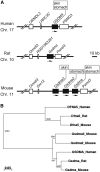

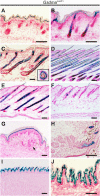
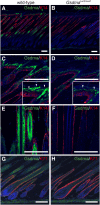
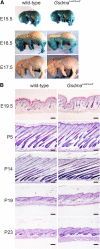
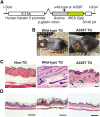

References
-
- Aoki N., Sawada S., Rogers M. A., Schweizer J., Shimomura Y., et al. , 2001. A novel type II cytokeratin, mK6irs, is expressed in the Huxley and Henle layers of the mouse inner root sheath. J. Invest. Dermatol. 116: 359–365 - PubMed
-
- Cheng J., Han D. Y., Dai P., Sun H. J., Tao R., et al. , 2007. A novel DFNA5 mutation, IVS8+4 A>G, in the splice donor site of intron 8 causes late-onset non-syndromic hearing loss in a Chinese family. Clin. Genet. 72: 471–477 - PubMed
-
- Delmaghani S., del Castillo F. J., Michel V., Leibovici M., Aghaie A., et al. , 2006. Mutations in the gene encoding pejvakin, a newly identified protein of the afferent auditory pathway, cause DFNB59 auditory neuropathy. Nat. Genet. 38: 770–778 - PubMed
Publication types
MeSH terms
Substances
LinkOut - more resources
Full Text Sources
Other Literature Sources
Molecular Biology Databases
Research Materials
